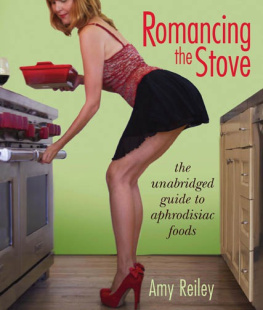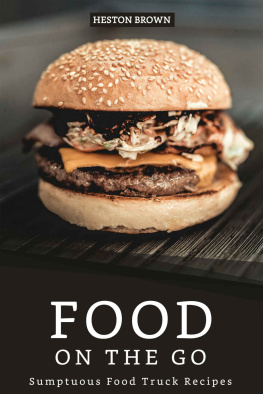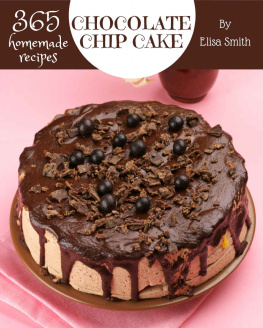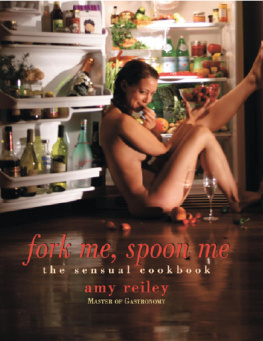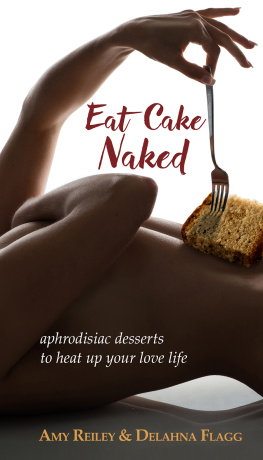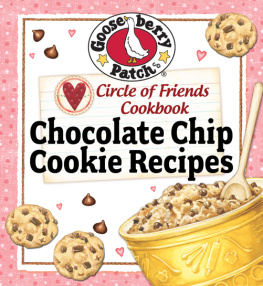~1~
What is an Aphrodisiac Food?
Its incredibly sad to me (sad is probably not a strong enough word) that the most widely known definition of an aphrodisiac food in the United Statespossibly the worldis that of the American Food and Drug Administration. The FDA defines an aphrodisiac as a food that directly raises sexual hormone levels. Now, unfortunately, the government maintains that there is no evidence of any one ingredient having this kind of impact on the body. In other words, its the FDAs stance that no food should be promoted as an aid to the world of romance.
I, obviously, have a very different definition of aphrodisiacs. After all, despite the FDAs cold shoulder toward the worlds most exciting foods, people around the globe have throughout history, and continue to this day, considered sensual foods as aphrodisiac.
Originally, it was a fascination with this disparity between the definition of the American government and the behavior of people the world over that drew me to the topic of aphrodisiacs. I couldnt get past the fact that so many culturessince the beginning of recorded timeheld foods in regard as aphrodisiacs. Cultures on opposite sides of the world at a time before communication between the East and the West were using the same ingredients for the very same romance-related purposes, ranging from seduction to treating impotence, improving fertility, celebrating newlyweds and lifting libido. How could so many differing people come to the same conclusion if aphrodisiacs have, as the FDA states, no impact on the body?
Over the years of studying how different cultures have applied aphrodisiacs, as well as recent scientific discoveries on the topic, reflecting on personal experience and, of course, reading Cosmo, I started developing a theory of my own on the use, or as I see it, many uses, of aphrodisiacs.
Then one night not long ago when I was suffering a bout of insomnia, I thought Id try lulling myself to sleep with a few chapters of Dr. Michael R. Liebowitzs The Chemistry of Love. (Not to say that it isnt a brilliant book but it is a far drier read than my usual bedtime chick litperfect insomnia fare, I figured.) But instead of being lulled back to dreamland, I was supercharged with adrenalin, energized by Dr. Liebowitzs findings, which helped to corroborate my theories on what defines an aphrodisiac food.
From the book I learned that, in the brain, we have two distinct chemical systems for romance. The first is attraction, which revs up energy and sharpens the senses. The second is attachment, in which the brains priority is security in a relationship over excitement. Dr. Liebowitz also finds that there are special moments in every relationship that dont fit into either of these two stages of romance. These he calls peak love experiences, to describe those almost magical moments in which our love or passion is at its most intensethose moments we try over and over again to recreate.
Now, Ill admit that there hasnt really been any serious research to demonstrate that the use of foods can assist the brain in making these changes in chemistry. However, I believe that certain applications of aphrodisiacs can be helpful in setting the stage for attractionand maybe even make the experience of initial attraction that much more fun!
I also believe that food can be used to help us achieve those elusive peak love experiences, not to mention offering some support in maintaining the delicate balance of that phase Dr. Liebowitz calls attachment (and most of us call marriage). In fact, without even hearing this scientific breakdown, Id been speaking and writing on my theory that different aphrodisiac ingredients should be called upon at different stages of romance. Long before The Chemistry of Love epiphany, it was how Id intended to divide the recipe chapters of my next (this) book!
Heres what I mean: some foods earn their aphrodisiac reputation for their ability to produce an immediate physiological effect on the body (useful in the attraction stage, right?). For instance, chile peppers have been used as aphrodisiacs throughout the Americas and Asia for centuries for their ability to raise body temperature and bring a blush to the cheeks similar to a sexual flush. Ginger, another warming spice, can make the eaters tongue tingle with anticipation and lips plump to a sexy pout without the need for collagenif only temporarily. Others, like coffee, elevate mood and improve energy or, like Champagne, deliver a quick shot of giddy pleasure. These are the kinds of foods Ive featured in Chapter 2, Recipes for Seduction.
One of the very first things I learned about aphrodisiacs, beyond their fascinating folkloric history, is that the mere scents of some foods can evoke the primal urges. Its a bit crazy to imagine a scientist dreaming up such a clinical investigation but in the late 1990s, Dr. Alan Hirsch of the Smell and Taste Treatment and Research Foundation in Chicago completed a study in which food aromas caused sexual arousal in subjects in both waking and sleeping states.
The most successful scent tested in the study to tempt men was a combination of pumpkin pie spice and lavender. (Who would have ever thought of putting them together?) For women, it was combining cucumbers withoddly enoughblack licorice candies. Other scents, such as glazed donut, buttered popcorn and vanilla showed promising results in both sexes.
Ive slipped ingredients with seductive aromas into recipes throughout the book for an added layer of romance. In addition to the research of Dr. Hirsch, Ive incorporated that of Dr. Max Lake, a brilliant MD, not to mention vintner, from Australias Hunter Valley. Dr. Lake discovered similarities between the scents of certain foods and the aromas of human pheromones. Ive added more in-depth discussion of Dr. Lakes work in Chapter 8, Dont WhineWine!
Continuing to absorb the findings in The Chemistry of Love , I became particularly fascinated with Dr. Liebowtzs discussion of romances attachment phase. I believe that aphrodisiacs are much more important to those already in a relationship than those falling in love, thats why Ive given the subject two recipe chapters: Chapter 3, Feed Your Libido and Chapter 4, Unleashing Your Inner Romantic.
Feed Your Libido includes, as the title implies, those foods providing nutrients essential to maintaining healthy sexual hormone levels. The recipes are packed with ingredients that promote the desire for passion. This chapter probably represents my favorite aspect of my chosen culinary niche. By looking at the nutritional makeup of many foods historically touted as aphrodisiacs, it becomes pretty clear why these ingredients were held in such high regard by cultures around the world in the first place. I love this stuff!
In fact, what I view as one of the most important aspects of my job as an authority on aphrodisiac foods is combining research of folkloric history with modern nutritional science to help promote a diet rich in the essential ingredients for a healthy sex life. Its really all about the old adage, you are what you eat. If you dont give your body the right balance of nutrients for overall health, you cant expect to have a fulfilling romantic life.
For example, without ample zinc you may have problems with blood flow. Without proper blood flow, simply put, orgasm is impossible. This could help explain the aphrodisiac allure of oysters, an easily digestible source of zinc. Vitamin E is also known as the sex vitamin because it is believed to aid in the production of sexual hormones. This may be the key to explaining the aphrodisiac history of ingredients like almonds, eggs and mangos. For readers looking to start a libido-boosting diet, in addition to the Feed Your Libido recipe chapter, Ive provided an entire Dictionary of Desire, Chapter 9, to help define the essential nutrients and key ingredients for sexual health for life.

